
Overview
This article highlights the crucial ecommerce performance metrics that direct-to-consumer (DTC) brands must monitor to enhance their business effectiveness. Key metrics such as:
- Conversion rates
- Average order value
- Customer lifetime value
- Customer acquisition cost
are emphasized. A strategic approach to these metrics can significantly boost profitability and growth, as demonstrated by case studies showcasing substantial improvements in client performance. By focusing on these essential metrics, DTC brands can not only track their progress but also implement actionable strategies that drive success.
Introduction
In an increasingly competitive digital marketplace, direct-to-consumer (DTC) brands confront a critical challenge: attracting visitors and converting them into loyal customers. To thrive and sustain growth, understanding key ecommerce performance metrics is essential for these brands. This article examines ten vital metrics that empower DTC companies to optimize their strategies, enhance profitability, and ultimately cultivate enduring relationships with their customers. How can brands effectively leverage these metrics to navigate the complexities of consumer behavior and maximize their success?
Parah Group: Comprehensive Conversion Rate Optimization Services
Parah Group delivers a robust suite of Conversion Rate Optimization (CRO) services tailored for direct-to-consumer (DTC) brands. Their offerings include:
- User session recordings
- Competitor analysis
- Conversion copywriting
- UI/UX design
- Customer surveys
- Ongoing A/B testing
This holistic approach ensures that every facet of a client's website and marketing strategy is optimized for growth. Clients have reported substantial enhancements, including a remarkable 35% increase in conversion rates and a 10% rise in revenue per visitor, as evidenced by successful case studies. For example, a $30M apparel company experienced an impressive 35% surge in conversion rates following the implementation of Parah Group's strategies. Additionally, another client in the cleaning product sector achieved an extraordinary 80% increase in average order value through refined pricing and bundling strategies. By focusing on these critical ecommerce performance metrics, Parah Group empowers DTC companies to enhance profitability and cultivate sustainable growth in a competitive landscape. As industry leaders assert, 'CRO is vital for converting traffic into revenue and supports customer acquisition, retention, and sustainable growth for DTC companies.
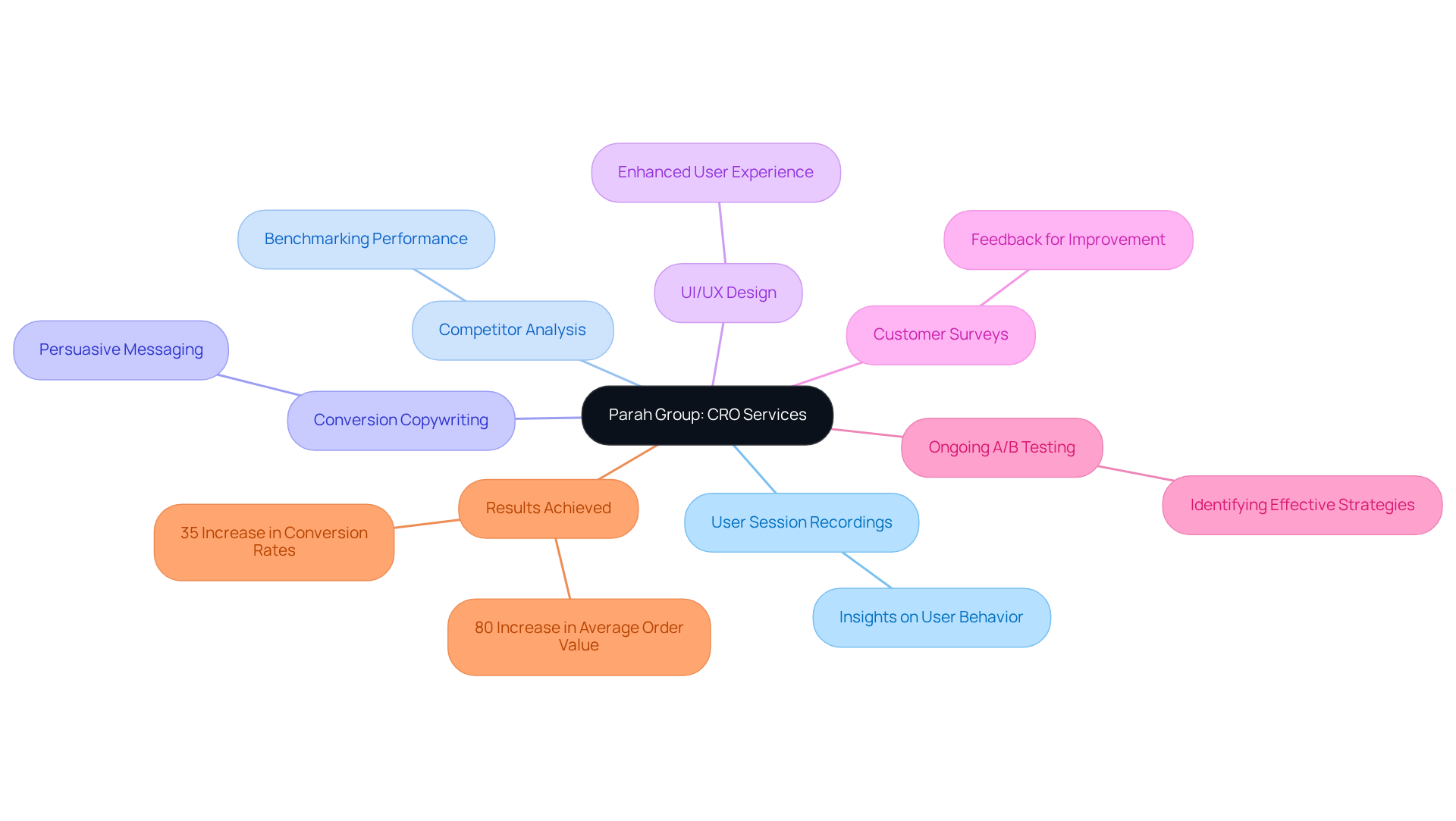
Conversion Rate: Measure Sales Effectiveness
The is a crucial component of ecommerce performance metrics, calculated by dividing the number of completed purchases by the total number of visitors to a website. A higher conversion rate signifies effective sales methods and robust user engagement. For direct-to-consumer (DTC) companies, consistent monitoring of ecommerce performance metrics is imperative to identify trends and make informed, data-driven decisions that enhance sales effectiveness. Parah Group, a leader in Conversion Rate Optimization (CRO), emphasizes sustainable growth and profitability through tailored strategies that reduce expenses while improving margins.
A/B testing emerges as a formidable tool in this endeavor, enabling companies to experiment with various website elements—such as headlines, images, and call-to-action buttons—to ascertain which variations yield superior conversions. Brands that have embraced A/B testing frequently report notable enhancements in conversion rates, with some experiencing increases of up to 30%. Parah Group's holistic approach guarantees that these tests are in alignment with overarching marketing strategies, thereby maximizing the impact of each modification.
Moreover, prioritizing the reduction of friction in the user experience can significantly elevate conversion rates, as streamlined processes encourage increased purchases. For example, simplifying the checkout process can markedly improve conversion rates, addressing prevalent causes of cart abandonment. Additionally, optimizing for mobile is essential, given that mobile apps convert at an average rate three times higher than mobile websites. By diligently tracking conversion rates and leveraging A/B testing, DTC companies can refine their strategies through ecommerce performance metrics, ultimately enhancing sales success and profitability. Parah Group's proven methodologies, as evidenced in numerous case studies, underscore their effectiveness in boosting conversion rates and driving revenue growth.
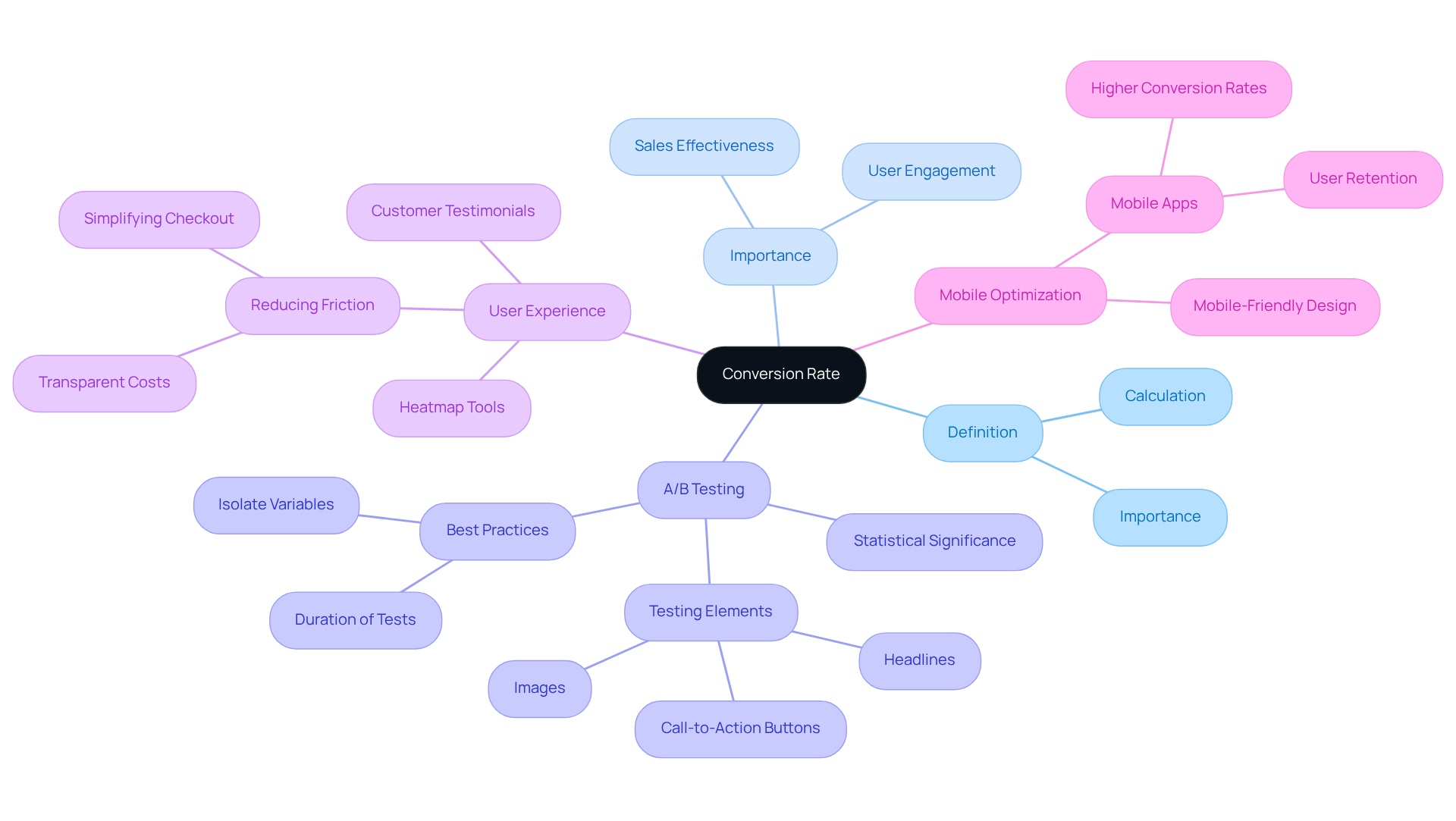
Average Order Value (AOV): Optimize Customer Spending
Average Order Value (AOV) stands as a pivotal metric for DTC companies, calculated by dividing total revenue by the number of orders. To enhance AOV, companies can deploy several effective strategies, such as:
- Upselling
- Cross-selling
- Providing discounts for larger purchases
Notably, product bundling—where complementary items are grouped—streamlines the purchasing process and can significantly elevate sales. Moreover, establishing strategic free shipping thresholds encourages customers to add more items to their cart, leveraging the psychological principle of loss aversion to drive higher spending.
Recent trends reveal that personalized product recommendations can lead to substantial increases in AOV. For instance, Grab Green, a $15M revenue cleaning product line, successfully tested free shipping thresholds and introduced bundles to encourage larger purchases, resulting in an impressive 80% rise in AOV. Similarly, STRNG Seeds, a rapidly expanding DTC cannabis company, implemented multi-packs and offered free gifts over a certain cart size, achieving a remarkable 90% increase in AOV. Additionally, a $30M apparel label redesigned its homepage to prominently feature social proof and reviews, contributing to a 10% increase in revenue per visitor and a 35% increase in conversion rate.
Industry leaders emphasize the necessity of optimizing client spending and acquisition costs (CAC). As Paula Moreno articulated, "Cross-selling and upselling are proven ways to increase Customer Lifetime Value (CLV), but their full power is unleashed when combined with data intelligence tools." By consistently analyzing ecommerce performance metrics, including AOV, and refining their strategies, DTC companies can unlock considerable growth opportunities and enhance overall profitability, as evidenced by the remarkable outcomes highlighted in these case studies.
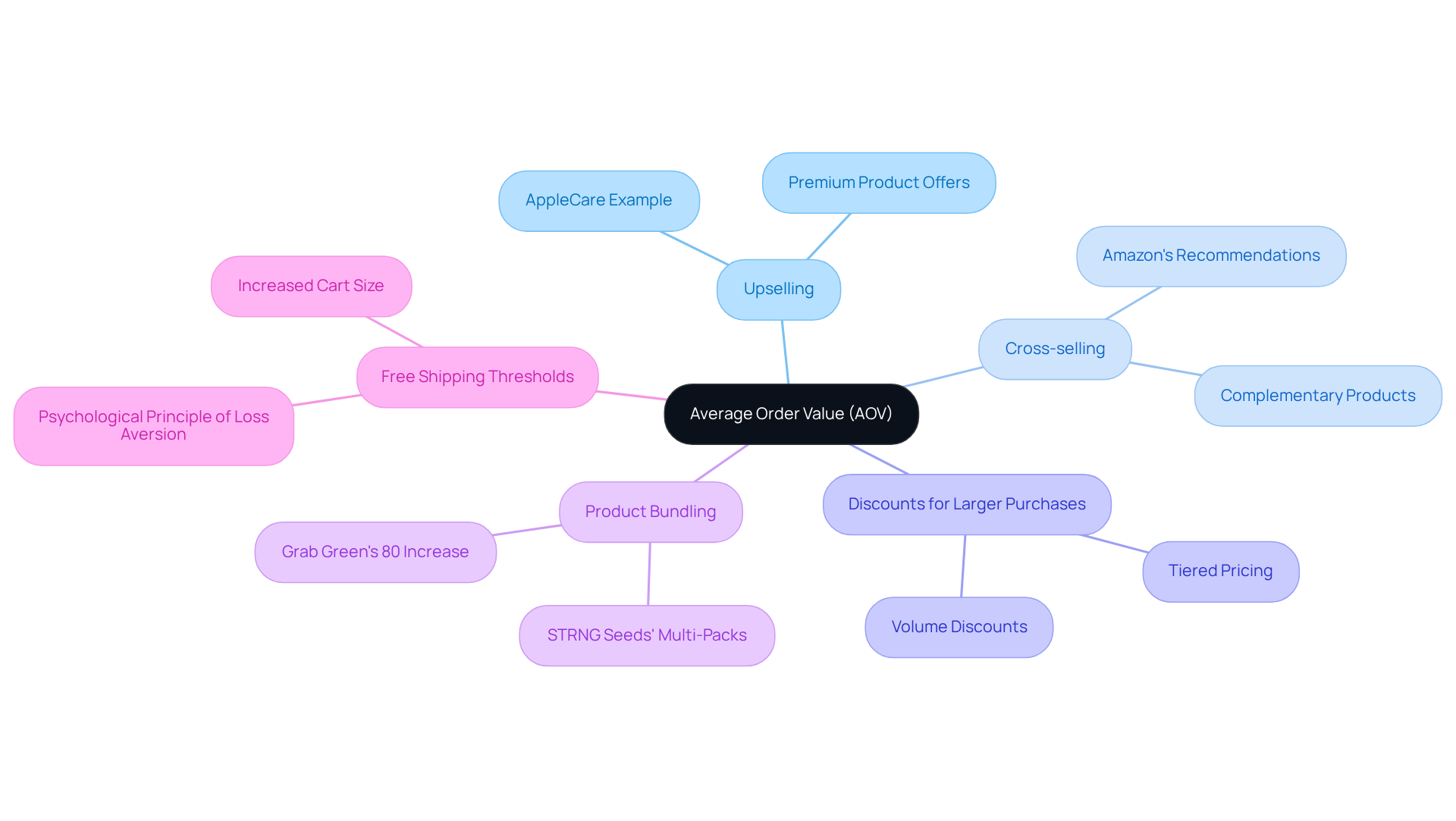
Customer Lifetime Value (CLV): Assess Long-Term Profitability
Customer Lifetime Value (CLV) stands as a crucial metric for DTC brands, calculated by multiplying the average purchase value by the purchase frequency and the average lifespan of clients. This metric not only illustrates the long-term value of clients but also informs marketing strategies aimed at maximizing profitability. Brands that focus on enhancing CLV through personalized marketing and loyalty programs can significantly bolster their financial performance. For instance, companies boasting a 40% repeat customer rate generate 50% more revenue than those with a mere 10% of returning shoppers. Moreover, even a slight 5% decrease in churn can result in profit increases ranging from 25% to 125%.
Parah Group's case studies illustrate how effective conversion rate optimization (CRO) techniques can directly impact CLV. A notable example includes a $30M apparel company that witnessed a 35% increase in conversion rates and a 10% rise in revenue per visitor after implementing strategies such as optimizing product pricing and incorporating gamified elements for free shipping thresholds. Similarly, Grab Green, a $15M cleaning product brand, enhanced their average order value by 80% through targeted bundles and multi-pack offers. These transformative outcomes underscore the critical role of CRO in elevating and profitability.
Personalized marketing strategies, encompassing tailored offers and targeted communications, have demonstrated effectiveness in boosting CLV. Research reveals that 77% of consumers favor companies that provide personalized experiences, and those who find value in their interactions are 2.6 times more likely to remain loyal. Loyalty programs should extend rewards beyond simple discounts, as this strategy can further strengthen client retention and advocacy. By focusing on these approaches, DTC companies can cultivate robust relationships with their clients, ultimately fostering sustainable growth and profitability.

Customer Acquisition Cost (CAC): Evaluate Marketing Efficiency
Customer Acquisition Cost (CAC) stands as a pivotal metric for DTC companies, calculated by dividing total marketing expenses by the number of new customers acquired. A lower CAC reflects more effective marketing strategies, a crucial factor for maximizing profitability.
To significantly reduce CAC, companies must prioritize the optimization of their marketing funnels, leverage data analytics to craft targeted campaigns, and . Notably, companies that adeptly integrate both online and offline channels can achieve a reduction in CAC while simultaneously fostering customer loyalty.
Current statistics reveal that many DTC companies grapple with an average CAC of approximately $25, highlighting the urgent need for strategic optimization. As competition escalates, particularly on platforms such as Facebook and Instagram—where advertising costs have surged by 9% year-over-year—it becomes imperative for companies to evaluate their marketing efficiency through the lens of CAC.
By placing emphasis on this metric, DTC companies can more effectively assess the return on investment for their marketing initiatives and implement strategies that drive sustainable growth.
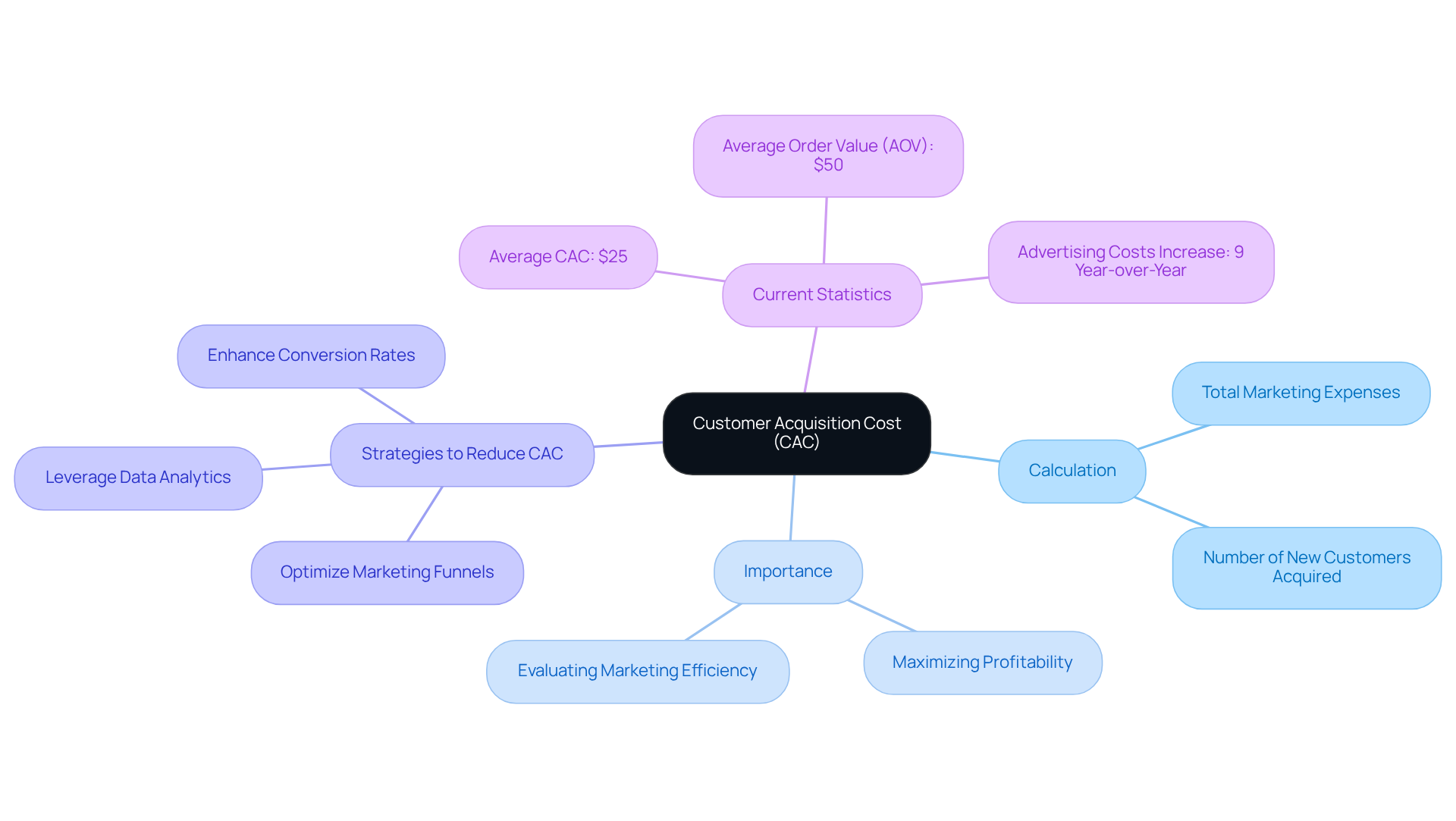
Cart Abandonment Rate: Identify Purchase Barriers
The cart abandonment rate is a crucial metric, calculated by dividing the number of abandoned carts by the total number of initiated checkouts. With approximately 70% of all online retail orders abandoned, a high often indicates underlying issues, such as complicated checkout processes or unexpected costs.
Direct-to-consumer (DTC) companies can effectively lower this rate by:
Notably, 34% of UK DTC companies require customers to log in to complete a purchase, a practice that may deter potential buyers. Consistently evaluating ecommerce performance metrics is essential, as they enable companies to identify specific obstacles within the purchasing journey and implement targeted enhancements.
By leveraging comprehensive Conversion Rate Optimization (CRO) strategies, companies can cultivate a frictionless checkout experience that addresses these prevalent pain points. As Janine Mulone aptly states, "Create a frictionless checkout process and watch these metrics soar."
By focusing on data-driven decisions and continuous testing, companies can enhance their ecommerce performance metrics, improve conversion rates, and ultimately drive greater revenue, ensuring sustainable growth and profitability.
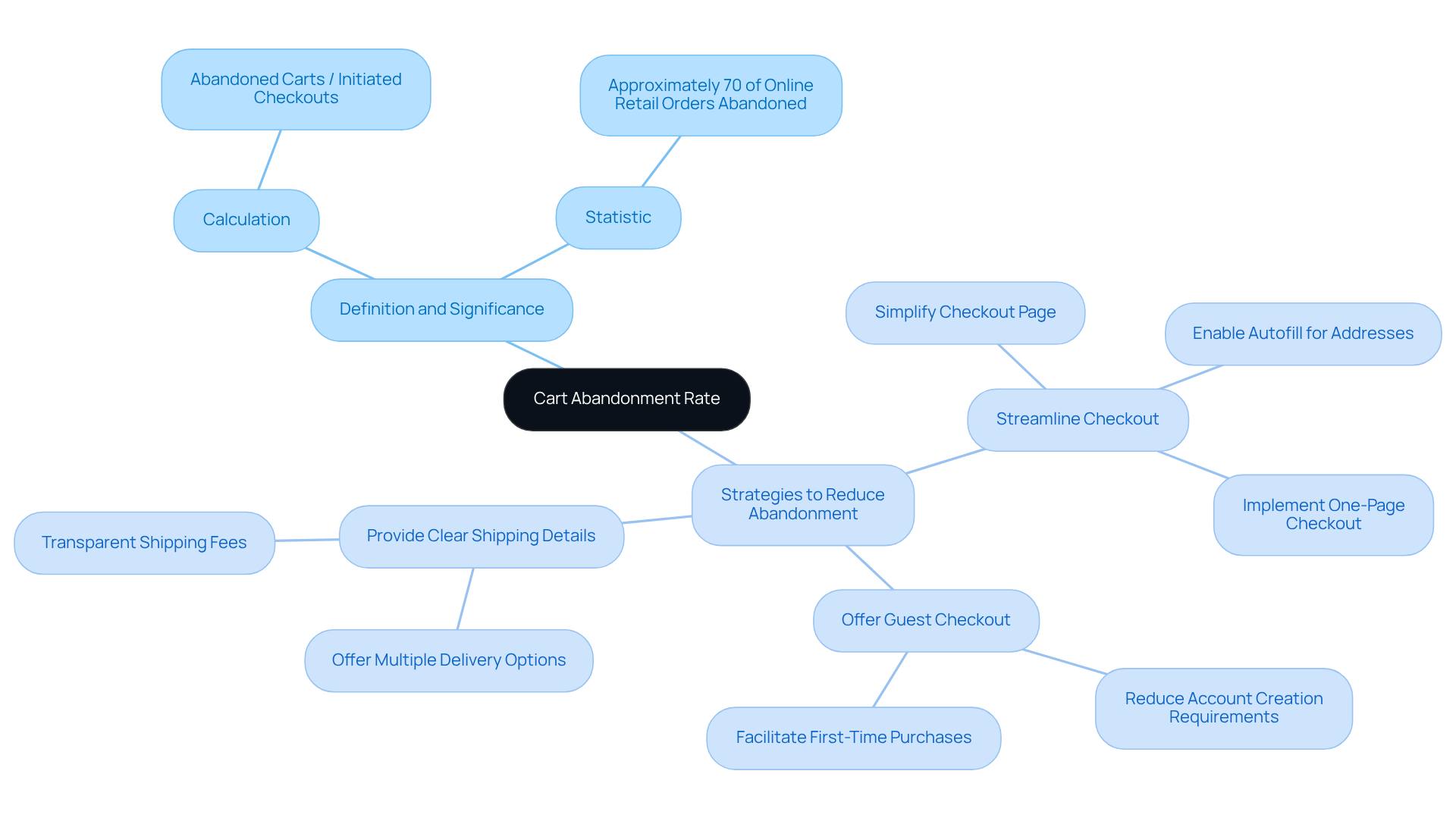
Return on Ad Spend (ROAS): Measure Advertising Effectiveness
Return on Ad Spend (ROAS) is an essential ecommerce performance metric for evaluating the effectiveness of advertising campaigns. It is calculated by dividing the revenue generated from an ad campaign by the total cost of that campaign. A higher ROAS signifies more effective advertising, making it crucial for DTC companies to continuously monitor ecommerce performance metrics. In 2023, the average ROAS benchmark is often regarded as around 4:1, indicating that for every dollar spent, four dollars are generated in revenue.
To enhance ROAS, companies should focus on targeted advertising methods. Leveraging AI-driven analytics can identify distinct audience segments based on behaviors and preferences, enabling more tailored marketing efforts. A recent study disclosed that Snapchat ads resulted in a 7.5% increase in ROAS, particularly benefiting fashion retailers targeting younger audiences. This underscores the importance of selecting the .
Effective advertising strategies also encompass optimizing ecommerce performance metrics, including ad creatives and landing pages. Engaging content, such as impactful headlines and persuasive sales copy, significantly elevates user engagement and conversion rates. Brands that prioritize clear calls-to-action (CTAs) and compelling messaging are more likely to successfully guide users through the conversion process.
Parah Group's case studies exemplify the transformative impact of Conversion Rate Optimization on ROAS. For instance, a $30M apparel company experienced a 35% increase in conversion rates after implementing strategies like redesigning their homepage to emphasize social proof and optimizing product pricing. Similarly, a cleaning product company achieved an 80% rise in average order value (AOV) by testing free shipping thresholds and introducing bundles. This demonstrates how strategic adjustments can result in substantial revenue growth.
Industry leaders stress the necessity for continuous optimization. As Ron Shah articulates, "Traffic campaigns help prime identity fit, building emotional coherence that turns scattered ad impressions into a meaningful narrative." This approach not only enhances immediate ROAS but also fosters long-term loyalty and client retention.
In summary, DTC companies must embrace a holistic perspective on their ecommerce performance metrics to enhance their advertising strategies. By concentrating on targeted audience engagement, creative optimization, and landing page enhancements, they can maximize ROAS and ensure sustainable growth.
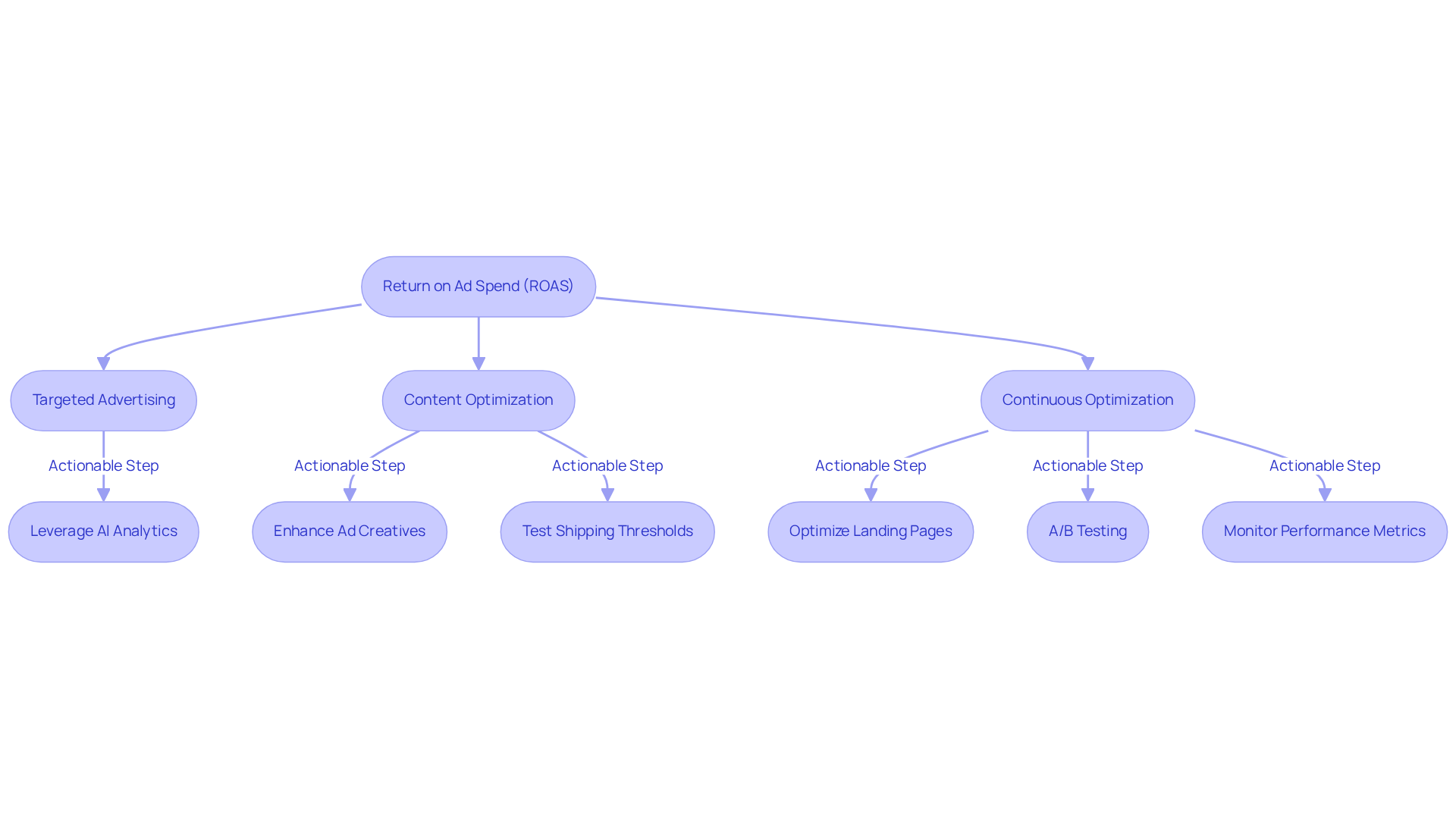
Customer Retention Rate: Gauge Loyalty and Engagement
The retention rate stands as a crucial metric for DTC companies, calculated by dividing the number of retained clients by the total number of clients at the beginning of a defined period. A high retention rate is indicative of strong client satisfaction and engagement, both of which are essential for sustainable growth. For instance, companies like Adore Beauty have achieved remarkable success, with repeat clientele accounting for 80% of their income and a 47% revenue increase over two years following enhancements to their loyalty program.
To bolster retention, DTC brands should implement loyalty programs that incentivize repeat purchases through points, discounts, and exclusive rewards. Additionally, personalized marketing strategies, including tailored email campaigns and targeted content, can significantly enhance client engagement. Regular communication, such as reminder emails aligned with average reorder cycles, further encourages repeat purchases and fosters a sense of community.
Experts emphasize that client retention requires a proactive strategy rather than a mere reactive effort. As Kirk Donlan articulates, "When client impact becomes a guiding principle across the business, retention stops being a reactive effort." By focusing on crafting meaningful user experiences and leveraging data for hyper-personalization, companies can forge enduring connections that lead to increased profitability. Ultimately, by like the retention rate, companies gain valuable insights into their customer relationships, enabling them to refine their approaches for sustained success.
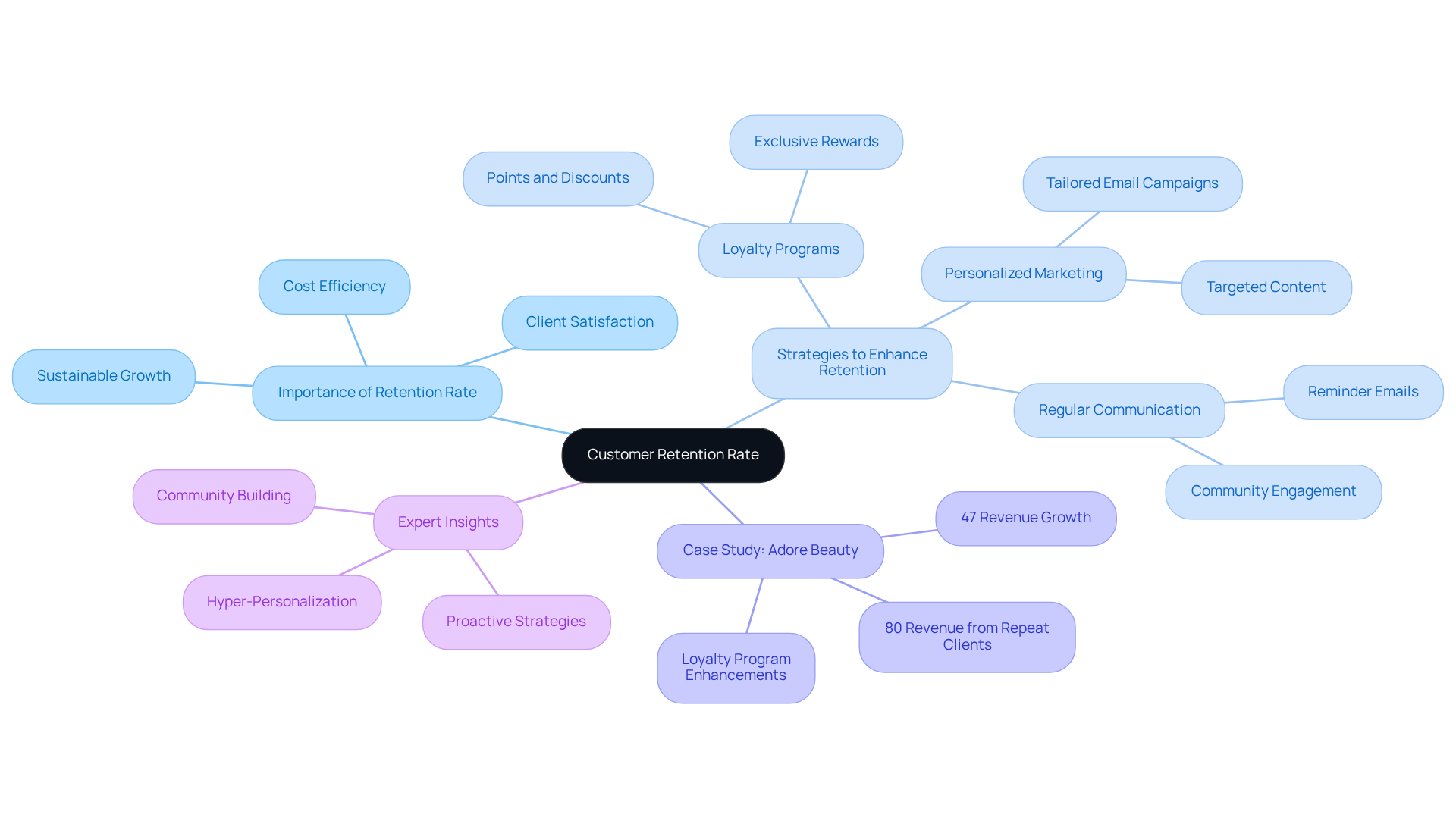
Website Traffic and Organic Search Performance: Assess Online Visibility
Website traffic quantifies the number of visitors to a site, while evaluates how effectively a site ranks in search engine results. For direct-to-consumer companies, improving both metrics is essential for sustained growth.
Implementing strong SEO approaches, engaging content marketing, and active social media involvement can significantly enhance visibility. Frequent examination of ecommerce performance metrics is crucial, as it allows companies to identify where visitors come from and enhance their marketing strategies accordingly.
As industry specialists assert, a well-implemented SEO plan not only attracts organic traffic but also nurtures long-term client connections, ultimately improving ecommerce performance metrics through higher sales and loyalty. Companies that effectively leverage client feedback can experience a 186% rise in purchase probability, underscoring the influence of genuine user-generated content in improving organic search results.
By prioritizing these strategies, DTC companies can navigate the competitive landscape and achieve substantial improvements in their online visibility.
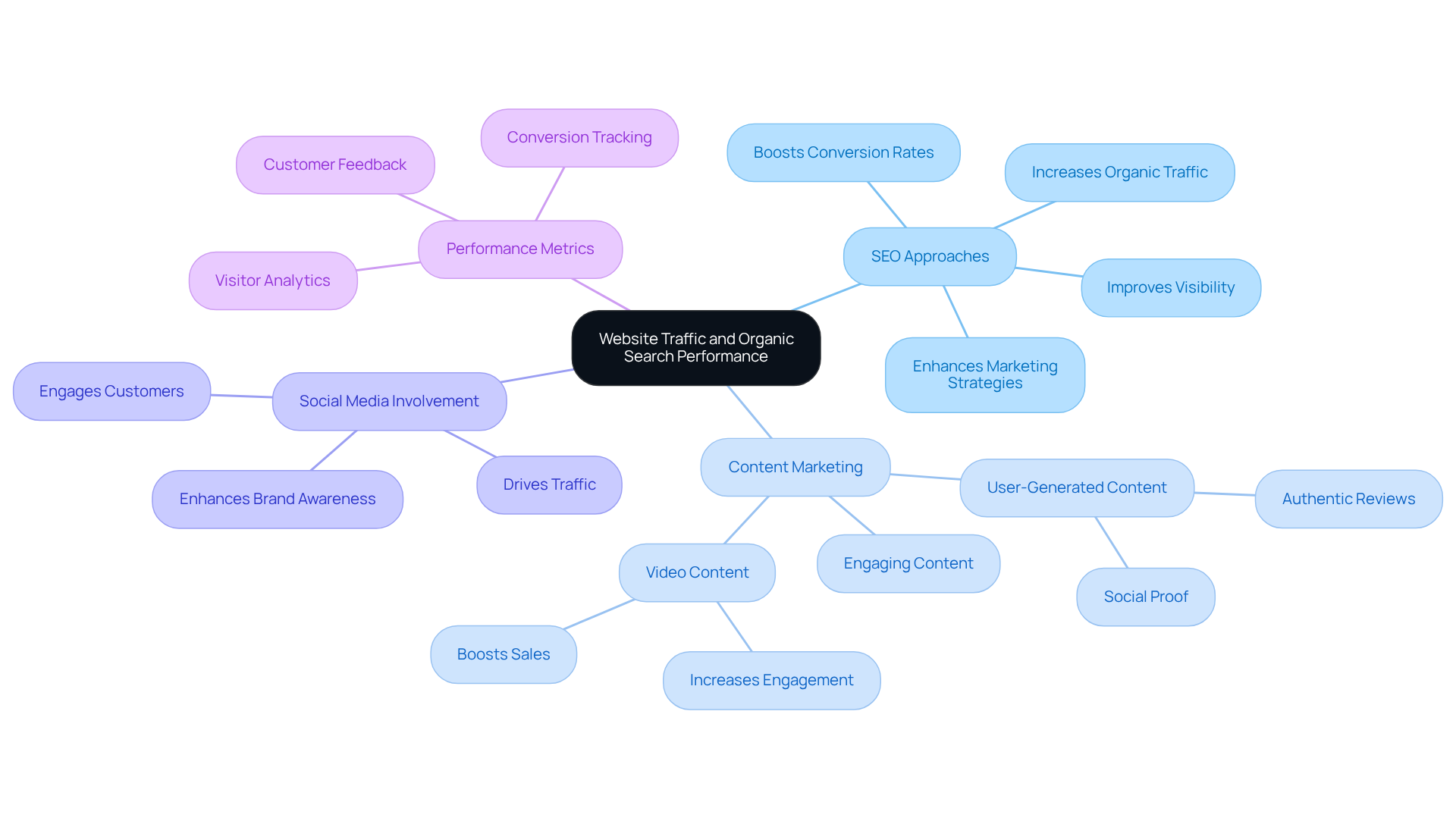
Net Promoter Score (NPS): Measure Customer Satisfaction
The Net Promoter Score (NPS) stands as a pivotal metric for assessing client loyalty and satisfaction, calculated by subtracting the percentage of detractors from the percentage of promoters based on survey responses. A high NPS signifies robust loyalty from clients, a critical factor for DTC companies aiming to thrive in a competitive landscape.
By regularly conducting NPS surveys, brands can collect invaluable feedback, identify areas for enhancement, and elevate the overall brand experience. Industry insights indicate that:
- An NPS score exceeding 50 is deemed excellent.
- Scores above 70 are categorized as world-class, reflecting a devoted clientele.
- The hovers around 62, underscoring the current climate of client loyalty within this sector.
As Cvetilena Gocheva aptly notes, 'In the B2C realm, loyalty has become progressively challenging,' underscoring the imperative for companies to engage actively with their clientele. Additionally, Dahn Tamir emphasizes that 'Net Promoter Score directly correlates with business growth and client retention,' highlighting its critical role in fostering long-term success.
Importantly, an NPS below zero signals urgent issues in ecommerce performance metrics that require immediate attention in ecommerce businesses. By effectively leveraging NPS, DTC brands can cultivate deeper connections with their customers and adjust their strategies to align with evolving expectations.

Conclusion
Understanding and effectively utilizing ecommerce performance metrics is not just beneficial; it is essential for direct-to-consumer (DTC) brands striving for sustainable growth and profitability. By concentrating on pivotal metrics such as:
- Conversion rate
- Average order value
- Customer lifetime value
- Customer acquisition cost
brands can make informed decisions that significantly impact their bottom line. These metrics offer invaluable insights, empowering companies to refine their strategies, enhance customer engagement, and ultimately drive revenue.
Throughout this article, we have thoroughly explored the significance of each metric. Conversion rate optimization through A/B testing, enhancing average order value via upselling and bundling, and measuring customer satisfaction with the Net Promoter Score are just a few of the strategies highlighted. Each metric serves as a critical component in the overall performance framework, providing actionable insights that can lead to substantial improvements in sales effectiveness and customer loyalty.
In conclusion, DTC brands must prioritize these essential ecommerce performance metrics to navigate the competitive landscape effectively. Embracing a data-driven approach not only enhances marketing efficiency but also fosters deeper connections with customers. By implementing best practices and continuously optimizing their strategies, brands can unlock significant growth opportunities and ensure long-term success in the ever-evolving ecommerce market.
Frequently Asked Questions
What services does Parah Group offer for Conversion Rate Optimization (CRO)?
Parah Group provides a comprehensive suite of CRO services that includes user session recordings, competitor analysis, conversion copywriting, UI/UX design, customer surveys, and ongoing A/B testing.
How do Parah Group's services impact conversion rates and revenue?
Clients utilizing Parah Group's strategies have reported significant improvements, including a 35% increase in conversion rates and a 10% rise in revenue per visitor.
Can you provide an example of a successful case study involving Parah Group's services?
A $30M apparel company experienced a 35% surge in conversion rates after implementing Parah Group's strategies, while another client in the cleaning product sector saw an 80% increase in average order value through refined pricing and bundling strategies.
What is the conversion rate and why is it important for DTC companies?
The conversion rate is calculated by dividing the number of completed purchases by the total number of visitors to a website. It is crucial for DTC companies as it indicates the effectiveness of sales methods and user engagement.
How does A/B testing contribute to improving conversion rates?
A/B testing allows companies to experiment with different website elements, such as headlines and call-to-action buttons, to identify which variations lead to higher conversions. Brands using A/B testing have reported increases in conversion rates of up to 30%.
What strategies can DTC companies use to enhance their Average Order Value (AOV)?
Companies can enhance AOV through upselling, cross-selling, providing discounts for larger purchases, and product bundling. Establishing free shipping thresholds can also encourage customers to add more items to their cart.
Can you give examples of companies that successfully increased their AOV?
Grab Green, a $15M cleaning product line, achieved an 80% rise in AOV by testing free shipping thresholds and introducing bundles. STRNG Seeds, a DTC cannabis company, saw a 90% increase in AOV by implementing multi-packs and offering free gifts.
What role does data intelligence play in optimizing customer spending?
Data intelligence tools enhance the effectiveness of cross-selling and upselling strategies, increasing Customer Lifetime Value (CLV) when combined with consistent analysis of ecommerce performance metrics.
FAQs











